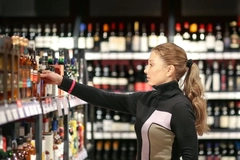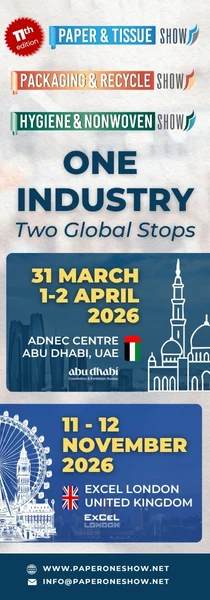
- Industry news
Industry news
- Category news
- Reports
- Key trends
- Multimedia
Multimedia
- Journal
- Events
- Suppliers
Suppliers
- Home
- Industry news
Industry news
- Category news
- Reports
- Key trends
- Multimedia
Multimedia
- Events
- Suppliers
Suppliers
“Trojan Horse”: Airborne micro- and nanoplastics cause human health hazards, warns CIEL

03 Apr 2023 --- Studies on the inhalation of micro- and nanoplastics show a series of adverse effects along the respiratory tract and beyond, ranging from irritation to the onset of cancer in cases of chronic exposure, according to the Center for International Environmental Law (CIEL). Research also indicates potential effects in early childhood development and disproportionate microplastic exposure rates across genders and societies.
“Humans can breathe airborne micro- and nanoplastics. Small particles can enter the lungs and move through the body, migrating to lymph nodes or other tissues and secondary organs via the bloodstream,” Giulia Carlini, senior attorney at CIEL, tells PackagingInsights.
She explains that micro- and nanoplastics act like a “Trojan Horse,” hiding harmful substances and carrying them inside bodies via inhalation, absorption and ingestion. “These harmful substances include hormone-disrupting chemicals linked to diabetes, infertility and hormone-related cancers.”
Airborne micro- and nanoplastics can travel quickly and cover great distances. They can move thousands of kilometers in days to weeks, affecting even remote populations.
Airborne microplastic emissions
Micro- and nanoplastics are ubiquitous in the environment but mainly invisible. They can be intentionally produced or result from the fragmentation of larger plastics. Regardless of the source, they are part of the bigger story of plastics, as they are fundamentally human creations.
“Exposure to airborne micro- and nanoplastics is not happening in a vacuum. Humans are exposed to multiple pollutants and hazardous chemicals daily, including micro- and nanoplastics ingested via other sources, such as food or drink. Scientists already identified a new plastic-caused disease in seabirds: ‘plasticosis,’” stresses Carlini. (Image credit: CIEL).
While research on airborne micro- and nanoplastics is in its infancy and a full understanding of human exposure is still ongoing, scientists clearly said that plastic endangers human health, and plastic exposure typically happens alongside other toxic substances.
“More than 10,000 chemicals are used in plastics, more than 2,400 flagged for potential concern because they meet one or more of the EU’s criteria for persistence, bioaccumulation and toxicity. Many others have not been adequately tested. Regulators need to apply the precautionary principle to address the risks of combined exposure,” says Carlini.
“If no action is taken, the volume of airborne microplastic emissions will follow the expected rise in plastic production, resulting in a greater risk of toxic impacts and spreading potentially toxic chemicals. Regulators need to dramatically reduce the production of plastics and phase out hazardous chemicals,” she asserts.
 (Image credit: CIEL).Microplastic exposure across societies and genders
(Image credit: CIEL).Microplastic exposure across societies and genders
CIEL research shows that the concentration of indoor plastic particles could be even higher than what is found in the open air. This concentration is particularly concerning considering that humans, especially Americans and Europeans, spend an estimated 70-90% of their time indoors, warns Carlini.
“Generally, scientists found that the health consequences of plastics production disproportionately fall on vulnerable people, low-income communities, people living in small- and middle-income countries, workers in plastics manufacturing plants and fenceline communities.”
Regarding genders, Carlino says that women are generally more disproportionately impacted by toxic exposures due to social norms, socioeconomic status and demographic trends, as well as biological factors such as size, body fat, hormonal and enzyme levels.
“Pregnancy and childhood are also particularly susceptible to harm from airborne plastic due to the increased immune, vascular, and organ stress from growth rates,” she says.
“While it’s important to have more sex- and gender-disaggregated data, microplastics have already been detected in humans, from human blood to placentas and breast milk, to testis and semen, and it’s clear that microplastics don’t belong in any human bodies,” highlights Carlini.
State and private actions required
The negotiations for a new global plastics treaty are a significant opportunity to take steps to address and prevent the threat of airborne microplastics, asserts Carlini. “Negotiators must look at the plastic crisis as more than an issue of marine litter to see impacts across all environmental compartments and the human body from the entire plastics life cycle.”
Airborne microplastics are just one piece of the plastic crisis. While the full range of effects is yet to be understood, CIEL says that researchers know enough to say that there are risks to human health, the climate and the environment.
“We urge negotiators to use the precautionary principle to set binding provisions to dramatically reduce plastic production and phase out hazardous chemicals globally,” she says.
Carlini continues that in the private sector, she has begun to observe changes. “We’re already seeing it with “forever chemicals” PFAS, where many influential companies want to eliminate toxic investments and seriously shift to sustainability and health before regulatory bans are enforced. Front-runners and investors need to focus on safe, toxic-free, essential and reusable materials and products.”
By Natalie Schwertheim











